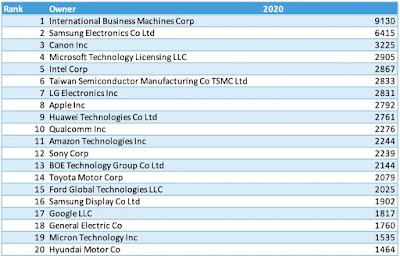What’s up
with the Stock Market(s)? Feb 8, 2021 the various stock market indexes all hit
all time highs. Wow. First off, Trump was very business friendly – some would
argue too business friendly (at the expense of the environment and labor. But
the market has chugged happily upward based on the likelihood of a Biden win
and the certainty of it after the election. Markets don’t like uncertainty, and
Trump has been a wildcard on many things like trade and certain industries. But
historically the markets have gone up after a presidential election no matter which
party wins. Of course, there are sector winners (renewables) and losers (oil,
coal and gas).
 |
Major US Stock Indexes for Year ending Feb 8 2021. S&P, DOW, Russel 2000, NASAQ QQQ |
The current
stock market is betting on another massive stimulus package and trillions of
dollars sloshing around in the economy. The interesting thing about the
mid-2020, the December and the upcoming stimulus is where all these boatloads
of money go. Many people have been working from home, making roughly the same
amount of money, and no good place to spend it. Savings rates were about 35%
from the first round, vs some 10% typical. There’s a limit to how much time and
money you can spend on your house. There’s a limit to how many vehicles you need
when you are working from home. Fixed income investing yields nearly zero
percent (real) return.
How about,
let’s go gamble – I mean invest – in the stock market. And we did. They call us
“Retail” investors (or individual investors) because we go out and buy stocks
on our own without the adult supervision of brokers and money managers. A whole
new group of investors were born using platforms like Robinhood and forming
investment forums in places like Reddit.
On the other
hand, there’s the institutional investors that have large investment portfolios
for pensions and such. Money managers have to be in a bull market or else they
miss the boat, look bad by reasonable comparison, lose money in their funds,
and get fired. Then there’s the hedge funds that use leverage and options to
make profits when the market goes up, when the market goes down, and especially
when there’s lots of volatility.
The basic
stock options are puts and calls. You can buy a call option for a specific strike
price in a specific month (usually the 3rd Friday of the month is
when options expire). If I think that Apple (AAPL) is going to go up, I can buy
a contract for 100 shares of apple in the future, say March. Apple is currently
at $136 (Feb 8, 2021). If I purchased 100 shares I would need $13,600, but I
could buy a contract to buy 100 shares of AAPL at $150 strike price in March
for a paltry $.80 per share. That’s $80 for 1 contract, plus some brokerage
fees. If the stock price goes up, the value of the option goes up dramtically.
But, if it doesn’t go all the way to $150 or higher by the expiration date, the
option becomes worthless, I lose my $80 per contract, and the person who sold
it to me still has their 100 shares of apple, plus an extra $80 for the
inconvenience. If Apple goes above $150 by early march, the option is “in the
money”, i.e., it will execute at that level on expiration Friday. If AAPL goes
to $152.80 at expiration, then I will automatically own 100 shares of AAPL at
the strike price of $150. Although I do have to fork over a lot of money ($150
x 100 = $15,000), I am getting $15,280 worth of stock that I can immediately
sell. So I made $2.80 per share, but it originally cost me $.80 a share for the
call contract. Usually, I don’t hold my call options for Apple until expiration,
I just sell my options for a profit or a loss a before expiration.
If the stock
goes up, say 5%, the strike price becomes much more attainable and the options
value may go up 20% or 30%. Of course, the same is true of a drop to amplify
the losses! But, the most I can lose in the case is $.80 on my long bet.
Brokerages
are so nice, they will lend you money to buy “on margin”. If you had $100,000
that you invested today in stocks, for example, you could borrow maybe 50% on
margin, meaning that you could buy another $50,000 in stock to go with your
cash purchases. When the market (or your specific stocks) are going up, you are
doing the happy dance!:-) But, when things go south, you could end up getting
crushed. The higher volatile stocks that you were borrowing against may become more
risky and move to 0% marginable. The leverage that helped you expand your
purchasing power by 50% will increase your losses on the way down. The
brokerage might even issue a “Margin Call”, and start selling off your (good)
stocks to cover your margin. Ouch. Ouch! And Double OUCH!!!
You can buy
stocks, and you can buy options, with a long position (expecting the stock
price to go up) or a short position (expecting the stock price to go down). Hedge
funds sometimes get into stocks (via options) when they anticipate something
big happening. If they expected the company to be struggling and maybe even go
out of business they could bet short and make a lot of money doing so. In fact,
just the attention by hedge fund (short interest) can make a struggling company
have even more problems and even put them into bankruptcy. For a $20 stock, let’s
say for example GameStop (GME) they might bet it would drop and have options to
sell stock on expiration at, let’s say $25. These contracts are 100 shares
each. What if the hedge fund has agreed to a contract to deliver, say, 1
million shares of GME at $25 at expiration in Feb, BUT they don’t actually own
any shares in the gaming company. Risky shorts find themselves in this
position. This is called “Naked Shorts”. The hedger has to buy stock on the
open market to cover their shorts. This is called a short squeeze. At one point
the shorted shares for GME were more than 150% of all available shares. And as
GME kept rising and rising, up to almost $500 per share, the pain of the
squeeze and the struggle to cover the naked shorts got worse and worse. The
Robinhood gamers just kept piling in. This is for a stock that was under $3 per
share at the bottom of the COVID recession in March 2020. People who rode the
stock down for $400 to $60 are probably pretty sad right now. There’s no good
reason that it won’t return to $20 or even lower.
It’s funning
that the Crowds have been rooting for the underdogs, the Robinhooders. Some
hedge funds have been crushed. Regulators think there’s something they should
do. Assuming that there’s nothing criminal going on, they are probably just
billowing smoke. In the meanwhile the Robinhooders and Reddit gangs have taken
on other targets like American Airlines (AAL), AMC, silver and others.
Feel free to
follow the Reddit gangs. This may be the best thing to happen to younger
investors where they make investments, hopefully in addition to the retirement
plans (IRAs, 401K). Make sure to use your “Mad Money”, not your life savings.
Try to take your winnings out of any profitable play and maybe let some of your
winnings ride. This gaming the market and betting. In the wise words of Kenny
Rogers: “You got to know when to hold em, know when to fold em; know when to
walk away; and know when to run.”
 |
| GameStop (GME) Stock Price for Month ending Feb 8 2021 |
#Robinhood #Investing #Reddit #Options #LosingYourShorts #IntellZine #SBPlan #IPPlan






